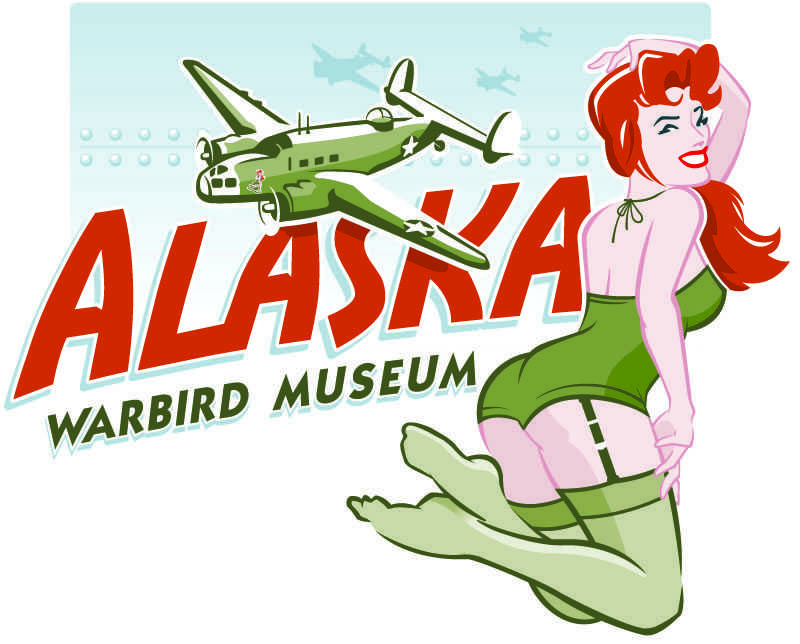Seventy-five years ago, war came to Alaska — and as the first U.S. Army airbase completed in Alaska, Yakutat was at the leading edge of the territory’s defense. The Alaska Warbird Museum, which aims to honor Yakutat’s World War II history, invites Southeast Alaskans to an event in honor of the 75th anniversary of the Yakutat air base’s opening.
The year 2016 holds many 75th anniversaries to major World War II events. The most notable is Dec. 7, when Japan attacked Hawaii. Alaska military personnel knew what was coming and began a massive buildup to defend the territory.
In early 1942, there was really nothing the U.S. could do to slow the Japanese advance throughout the Pacific. America’s best effort turned out to be a strategic failure called the “Doolittle Raid.”
Led by Jimmy Doolittle, the U.S. launched a handful of twin-engine land bombers off the deck of the aircraft carrier Hornet. These aircraft were supposed to land in China — all but two ran out of fuel and crashed. On their way over Japan, they dropped a few bombs but did little damage. In other words, the mission was a complete failure — except for what it had done to the Japanese psyche.
The only information the Japanese could glean from the Doolittle Raid was that Jimmy Doolittle grew up in Nome. This fact had absolutely no bearing on the raid, but it fed into Japan’s obsession with Alaska. As the Battle of Midway approached, Japan had twice the carriers available, along with the more experienced pilots and technologically advanced aircraft. They divided their forces and sent two of those carriers to the Aleutians. When the U.S. found the Japanese fleet at Midway, that diversion helped the U.S. win that crital naval battle and sink four Japanese carriers.
Alaska was at war with Japan, but a “war” had also been raging for years (or a century) between the U.S. Army and U.S. Navy. They didn’t share information and they fought over funding and jurisdictional control. Since President Franklin D. Roosevelt was a Navy man, the Navy usually won these battles. General Simon Bolivar Buckner Jr., commander of the army in Alaska, was told not to set foot in the Aleutians because islands are “ships” and therefore the jurisdiction of the Navy.
In 1940, Buckner was given authorization and money to build three projects in Alaska: Yakutat, Annette Island and the cold-weather Research Station in Fairbanks. The Yakutat airbase was supposed to have three runways, but it only has two. General Buckner secretly planned airfields at Umnak and Cold Bay, where preparation work was disguised as work for fish canneries. Not long before Pearl Harbor, Buckner got permission from Gen. George C. Marshall to go ahead with full-scale construction.
When the Japanese struck Unalaska and the naval base at Dutch Harbor, they had three times as many men to land as the US had to defend the entire territory, but they were hit by antiaircraft fire and a P-40 fighter response much stronger than they expected, thanks to codebreakers’ warning and the logistical support Buckner laid in place. The Japanese had already decided against invading Adak, and the ferocious defense of Dutch Harbor deterred any further advances. Yakutat’s “third runway,” on Umnak and at Cold Bay, saved Alaska from that invasion. Had these bases been financed in the open, Japan would undoubtedly have been prepared and Alaska’s role in the war could have been far different.
Although the first bomber landed at Yakutat’s air base on May 8, the formal grand opening took place Aug. 6, 1941. This year, Yakutat’s annual Fairweather Day celebration falls on that date, so the official celebration is Friday Aug. 5. The Alaska Warbird Museum is celebrating with a statewide fly-in and air show, complete with aircraft from the National Guard and possibly the Canadian Air Force. There will be World War II aircraft from Anchorage that (weather permitting) will give rides for a fee. The event will close with a 6 p.m. hangar banquet dinner (for a $30 donation) and speeches from commissioner of the Department of Military and Veterans Affairs and adjutant general of the Alaska National Guard Laurie Hummel and Lt. Gov. Byron Mallott.
The Alaska Warbird Museum still has a long way to go, but ultimately, this event is about honoring those who serve our country, not just in World War II, but all of America’s veterans and active servicemen and women. Freedom doesn’t come from the promises of politicians, or the words on old, dusty documents. It comes from the people who stand with their bodies as our shields, to protect us from those who wish us harm.
A tentative schedule of events includes the Rasmuson Sandy Beach Park dedication at noon, a paper airplane contest at 1 p.m., a short-field landing contest at 2 p.m., a flour drop at 4 p.m., a hangar banquet at 6 p.m., speeches at 7 p.m. and wrap-up and clean-up at 8 p.m.
For more information or questions, go to https://akwarbirds.wordpress.com/ or contact Bob Miller at bob@akwarbirds.org.
Editor’s note: Bob Miller is the founder of the Alaska Warbird Museum. This piece is adapted from an entry on the museum’s website, available at akwarbirds.com.
For an article about the museum, go to http://www.capitalcityweekly.com/stories/042915/new_1246292026.shtml.

